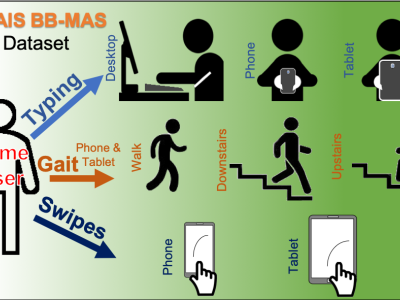High-Resolution Real-Time Microwave Frequency Variation Detection Enabled by Photonic Delay-line

- Citation Author(s):
-
Yang Xiangzhou
- Submitted by:
- Yang Xiangzhou
- Last updated:
- DOI:
- 10.21227/61pn-kb22
 3 views
3 views
- Categories:
- Keywords:
Abstract
Real-time microwave frequency variation (MFV) measurement is crucial for a wide range of applications. However, current solutions often fall short in terms of resolution, speed and range. We present a novel technique that leverages the sine-cosine encoder principle, enabled by a photonic delay line (PhDL), to detect rapid MFV in real-time with ultra-high resolution. By incorporating a 1 km PhDL, our sine-cosine microwave frequency detector (MFD) achieved a resolution of 50 Hz (more than 4 orders of magnitude better than microwave photonics-based frequency measurement techniques), a speed of 1 THz/s, and a range of 7 GHz from 5.7 to 12.7 GHz, only constrained by the detection circuit noise, and the bandwidth and range of the microwave component used. The resolution can be further improved by using PhDL with longer fiber length while the operation frequency can be extended up to 220 GHz with thin film lithium niobate based PhDL. This technology can accurately characterize all MFV parameters of a tunable signal source, including chirp rate, direction, waveform, range, tuning ripples, and nonlinearity. Practical demonstrations show that our sine-cosine MFD can precisely measure both minute Doppler frequency shifts from modulating a phase shifter and large chirp frequency sweeps from a Fourier domain mode-locked opto-electronic oscillator (FDML OEO). This advancement paves the way for detecting MFV with unprecedented resolution and dynamic range, and will be highly valuable in secure communications, passive Doppler radar, electronic warfare, metrology, and scientific research.
Instructions:
The dataset we uploaded is part of the results in the manuscript titled "High-Resolution Real-Time Microwave Frequency Variation Detection Enabled by Photonic Delay-line". These results demonstrate the operating range, maximum test speed, and frequency resolution of the proposed Sine-cosine MFD system. It should be noted that the data we upload is in fig format processed by MATLAB, and no additional scripts are required to process it.





